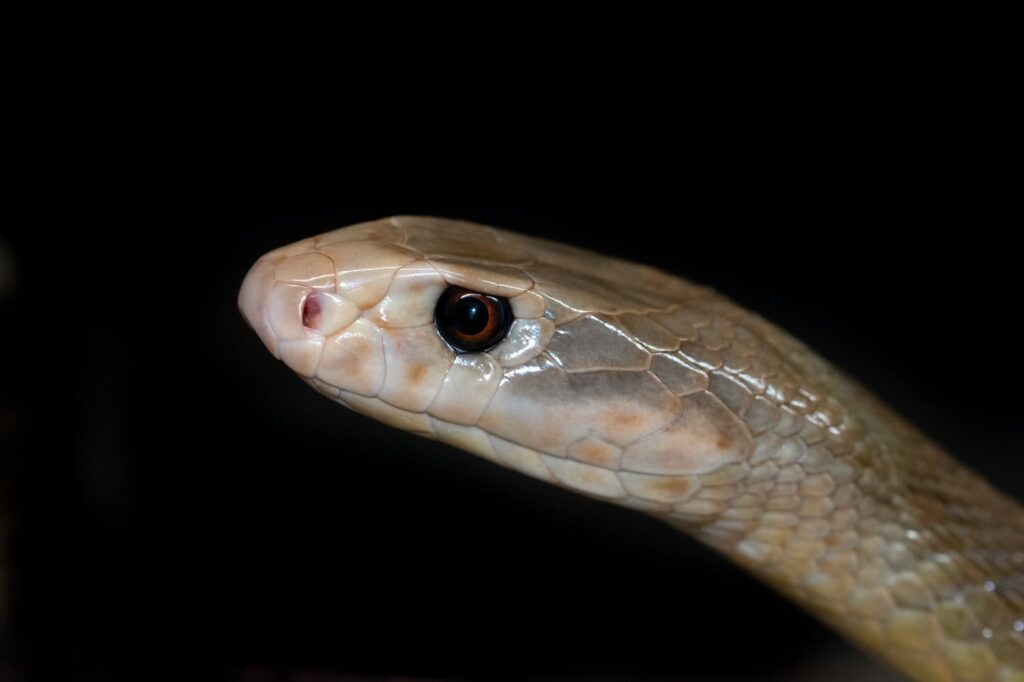A venom is a form of poison that has evolved for a specific function. A bite or sting is used to inject it. Because venom is made up of a mix of small and large molecules, it requires a wound to enter the host and enter the bloodstream to be effective. As a result, vicious creatures defend themselves more aggressively. A poisonous animal is a taipan, which injects venom into its victims using syringe-like teeth. Jellyfish use venom-filled harpoon-like projections that shoot out from cells along their tentacles when they are touched to inject poison into the skin.
An animal can be both poisonous and venomous on rare occasions. When the blue-ringed octopus bites with its beak, it is venomous, but if it is swallowed, it is toxic. This is because it contains various toxins, the most effective of which (tetrodotoxin) can be absorbed due to its small size.
Although “Venom” and “poison” are sometimes used interchangeably, they are not synonymous. True, they’re both hazardous substances that might injure or kill you, but the primary difference is how they’re delivered to the unfortunate recipient.

Inland Taipan
The Inland Taipan is sometimes referred to as the world’s most venomous snake. Unlike its common and fiery-tempered congener, the Coastal Taipan, this secretive serpent is generally peaceful and rarely seen in its isolated, semi-arid habitat.
History of Inland Taipan
The deadly inland taipan is a member of the elapid snake family. It can be found in Central and East Australia’s semi-arid regions. The inland taipan was discovered towards the end of the nineteenth century, but scientists couldn’t describe and investigate it until the next specimen arrived 90 years later.
Diet / Feeding
The Long-haired Rat Rattus Villasimius, the introduced House Mouse Mus musculus, and numerous small dasyurids appear to be the only small to medium-sized mammals that Inland Taipan prey on in the wild. Prey is frequently cornered in a burrow or a soil fissure before being bitten multiple times in a short period. The inland taipan is not just a venomous snake, but many people consider it the most venomous snake on the planet.
Reproduction
The female of this snake species is oviparous, laying between one and twenty-four eggs in abandoned animal burrows or deep crevices. After two months, the eggs hatch. The hatchlings are approximately 47cm in length. Its diet influences this species’ reproductive rate; it reproduces less when there isn’t enough food.
Interesting Inland Taipan Facts:
Following are interesting facts about Inland Taipan:
· Inland taipan can get to be 6 to 8 feet long.
· The back of an inland taipan is light brown to brownish to light green. The black margins of the scales on the dorsal and lateral sides of the body generate V-shaped marks along the body. The belly is either creamy or lightly golden. The head, neck, and rounded nose are darker than the remainder of the body.
· The color of the body changes with the seasons. During the summer, the light-colored body prevents overheating of the inland taipan, while the dark-colored skin promotes heat accumulation during the winter.
· Early in the morning is when the inland taipan is most active (diurnal). During exceptionally hot seasons of the year, it becomes active at night (nocturnal).
· The inland taipan has great eyesight and a keen sense of smell, both of which are employed to find prey. Rodents, small animals, and birds make up its food.
The inland taipan is considered the world’s most venomous snake. The venom in each bite is enough to kill 100 adult males or 250.000 mice.
· The inland taipan is a fast snake that can bite up to eight times in one attack. It retreats and waits until the victim dies inside the soil crack before returning to swallow it.
· The number of rodents determines the number of wild inland taipans. Food abundance (rodents) aids reproduction, resulting in a rapid increase in the number of inland taipans.
· Because of its strong venom, the inland taipan is also known as the “fierce snake” (not aggressive by nature).
· Humans rarely encounter inland taipans in the wild, and bites are quite rare (inland taipans bite only in self-defense). In the absence of antivenin, humans die 30 to 45 minutes after being attacked.